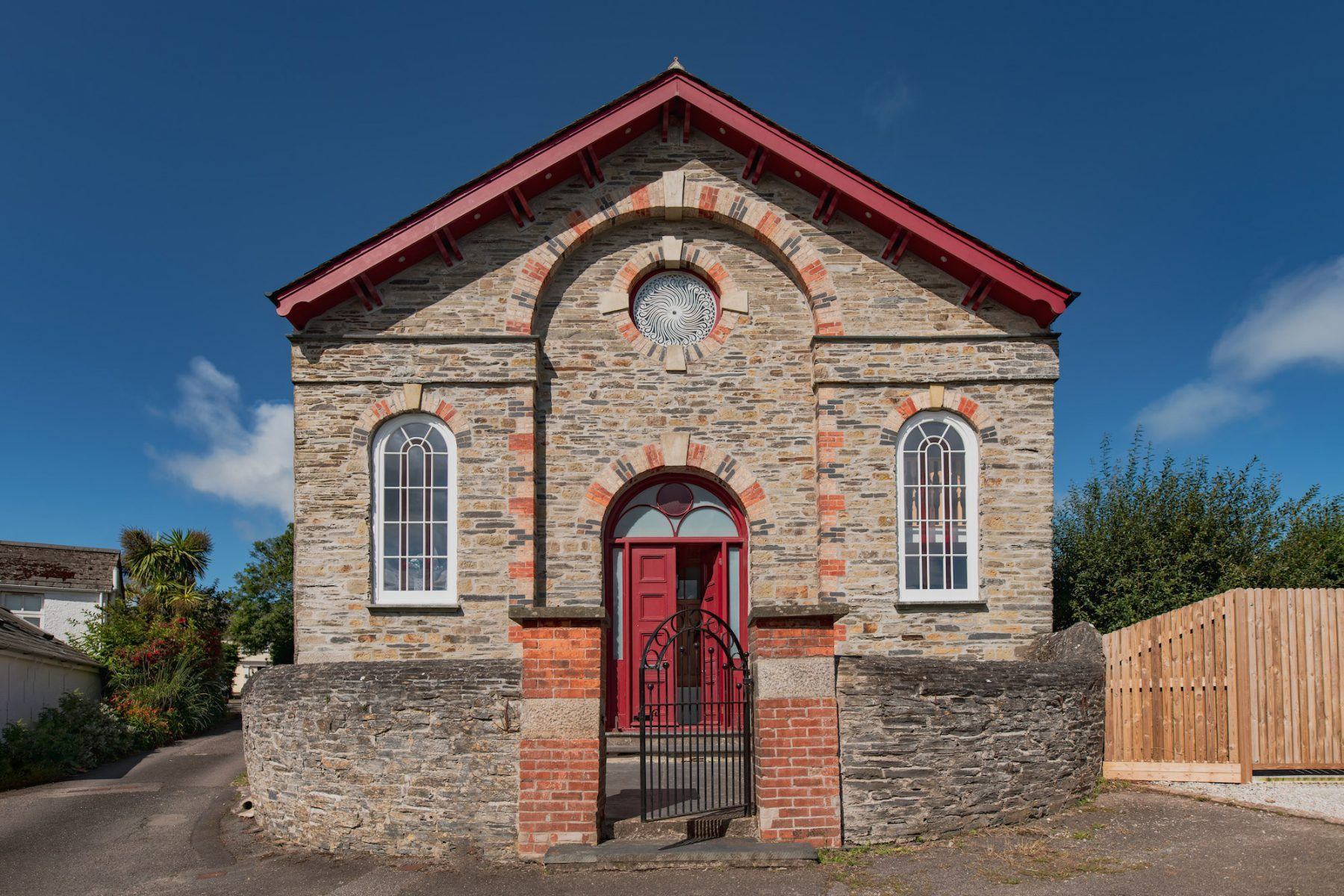« Blog
Choosing Glass Options For Timeless Windows
Posted on: 15th November, 2023
Windows are essential elements of your home’s architectural design and can seamlessly blend interior and exterior spaces. But among all the decisions involved in handcrafting timeless window and door frames, the choice of glass is of unique significance. Thoughtful consideration of aesthetics and functionality and the characteristics of each type of glass can help you select the right option for you and your home.
Making the right choice
Windows can define the look and style of your home, and their function, form, and aesthetics are as important as any other feature. But choosing the right type of glass to give your windows the final touch of style can be challenging, depending on what you prefer and what your house calls for stylistically and functionally – and this is something many of our clients want help and advice with.
Working with our trusted glazing partners, we can offer a wide range of different glass types suitable for modern contemporary homes, period or listed properties, or properties in conservation areas. To guide you, we’ve gathered a selection of glass types and useful information on some of the most popular options to give your handcrafted windows the finish they deserve.
The NMJ standard glass
For all windows we manufacture without any special requests, we use a high-performance, annealed 24mm double-glazed unit. This glass type consists of 4mm toughened glass with a 16mm spacer filled with 90% Argon gas, plus 4mm of soft coat toughened glass.
Meeting and exceeding current building regulation documents, specifically the updated Part L (‘Conservation of Fuel and Power’), which introduces new minimum efficiency standards, this glass has a U-value of 1.2 for excellent solar heat gain and light transmission while reducing CO2 emissions from your home.
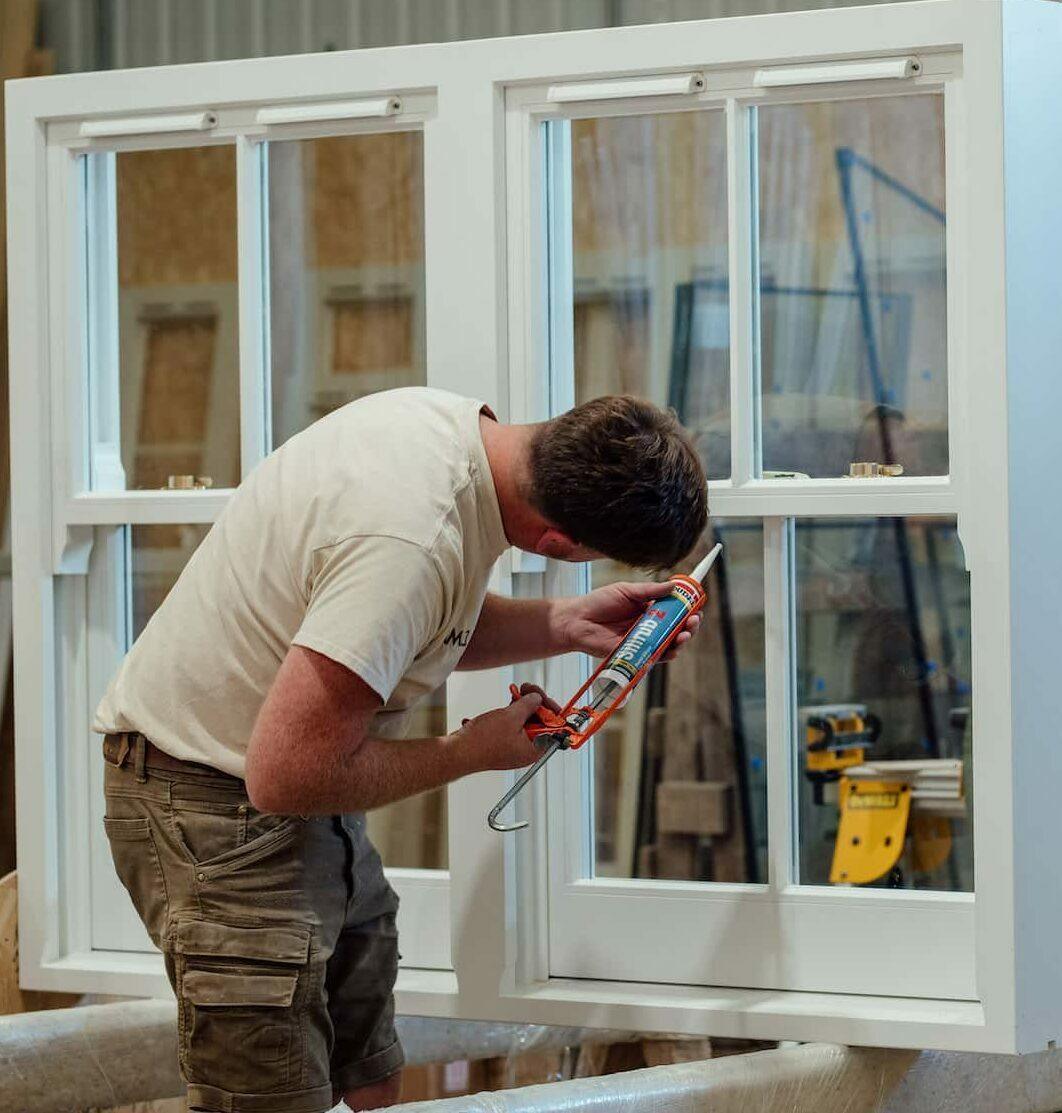
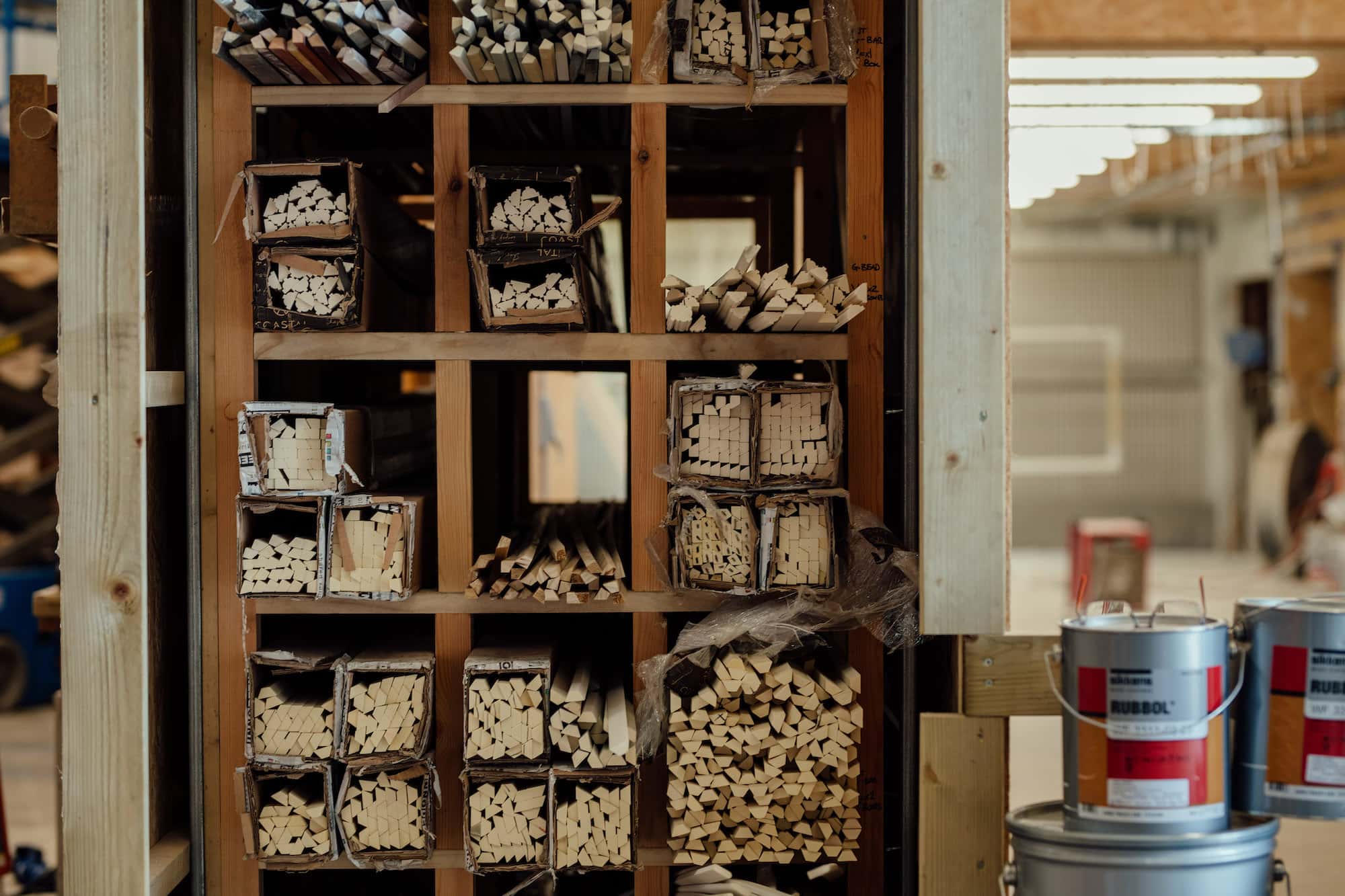
Energy-rated units
Elevate your space with energy-rated units where cutting-edge technology meets sustainability. When fitted with C to A-rated glass, our window units could achieve a top-rated U-value of 1.2, consisting of low-emissivity (Low-E) glass with Argon gas and warm edge spacers. Low-iron glass can also help towards a window’s energy rating and can let in more heat without altering the U-values.
Thermally-efficient glass
Experience unmatched comfort with thermally efficient windows. High-performance Low-E glass can help retain more heat in your home as the U-value can reduce to 1.0 (16mm cavity) or 1.1 (18mm cavity or above). Engineered for insulation, thermally-efficient glass reduces heat gain and creates a comfortable environment while minimising energy consumption. Ideal for large, south-facing windows.
Histoglass
As an alternative to traditional thermally efficient glass, Histoglass offers historically accurate thermal glazing options specifically for historic and period buildings, blending modern technology with vital preservation needs. Their innovative thin double glazing range delivers U-values of 1.9 to 1.5 or more to improve energy efficiency and have sound insulation up to 34dB. As an option we’re being asked more about, Histoglass is recognised and trusted by many planning authorities as it preserves the authenticity of heritage buildings without compromising their protected architectural integrity.
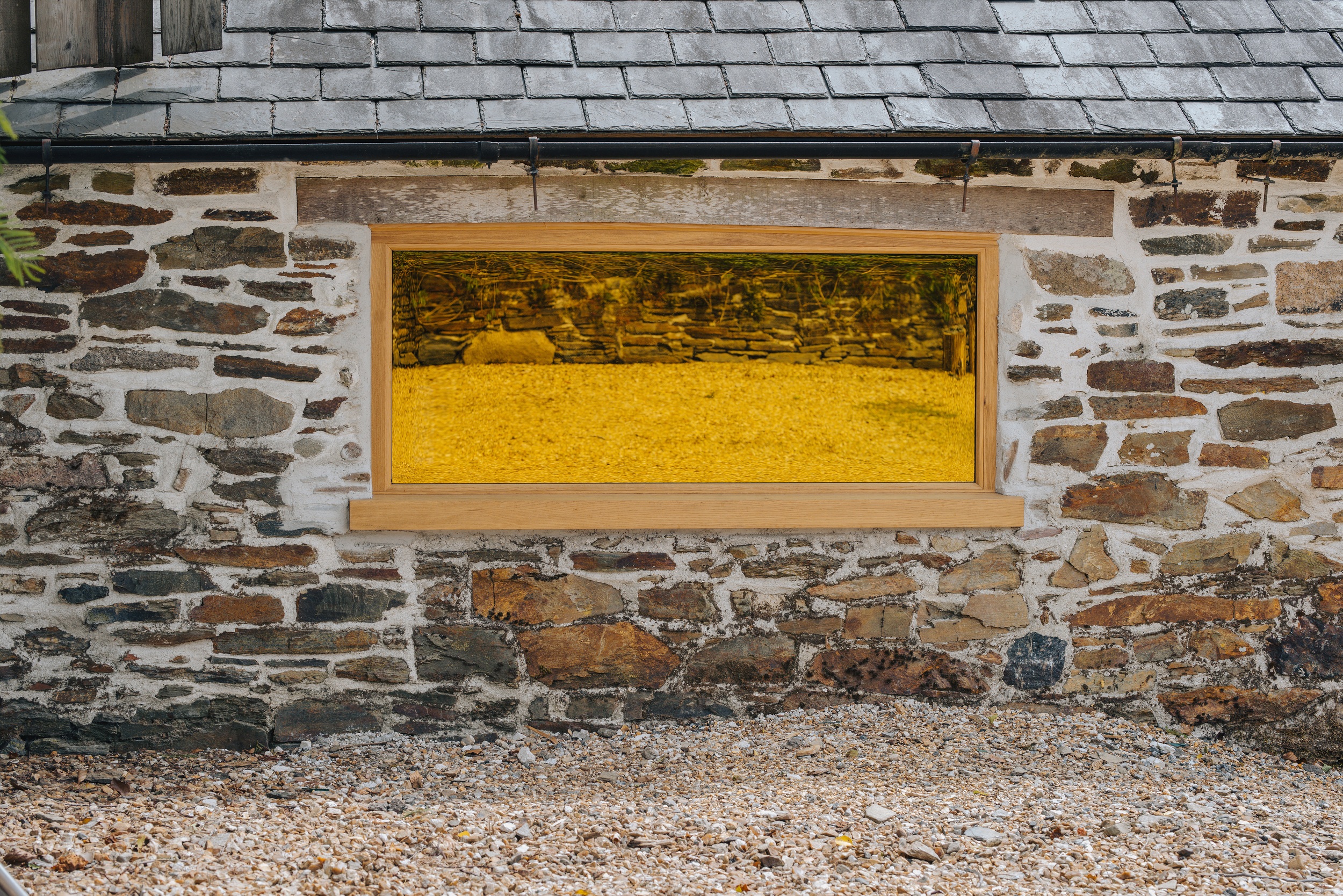
Acoustic glass
Noise reduction is important to many people, especially if your home is near motorways, busy roads, train lines, or an airport. Using acoustic glass, our precision-crafted windows effectively minimise outside noise, providing a more peaceful home.
Heritage glazing
Heritage glazing offers an ultra-slim double-glazing unit that still gives the best in thermal performance while preserving the charm and authenticity of listed or historic properties or properties in conservation areas. With overall thicknesses ranging from around 6mm-16mm to suit the property’s architecture and age, heritage glazing can provide a faithful finish.
Single glazing
Single glazing is, of course, a window or door constructed using just a single layer of glass with its thickness ranging from around 3mm-10mm. While it won’t have the thermal or insulation properties of double or triple glazing, our standard 6mm toughened single glazing still allows natural light to enter spaces and is a cost-effective option. Its simplicity makes it suitable when temperature control is not a primary concern but may be a requirement for conservation officers or listed properties.
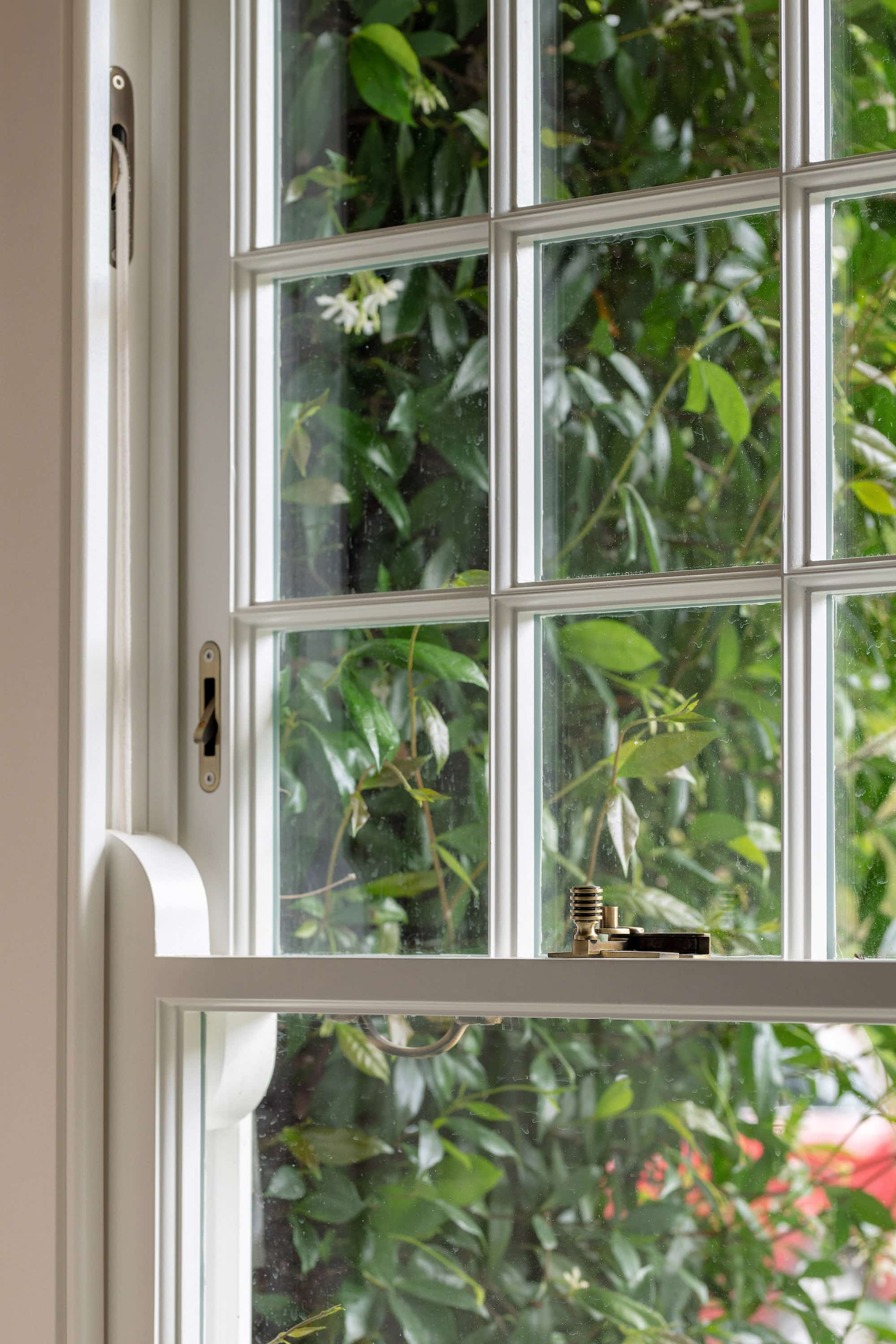
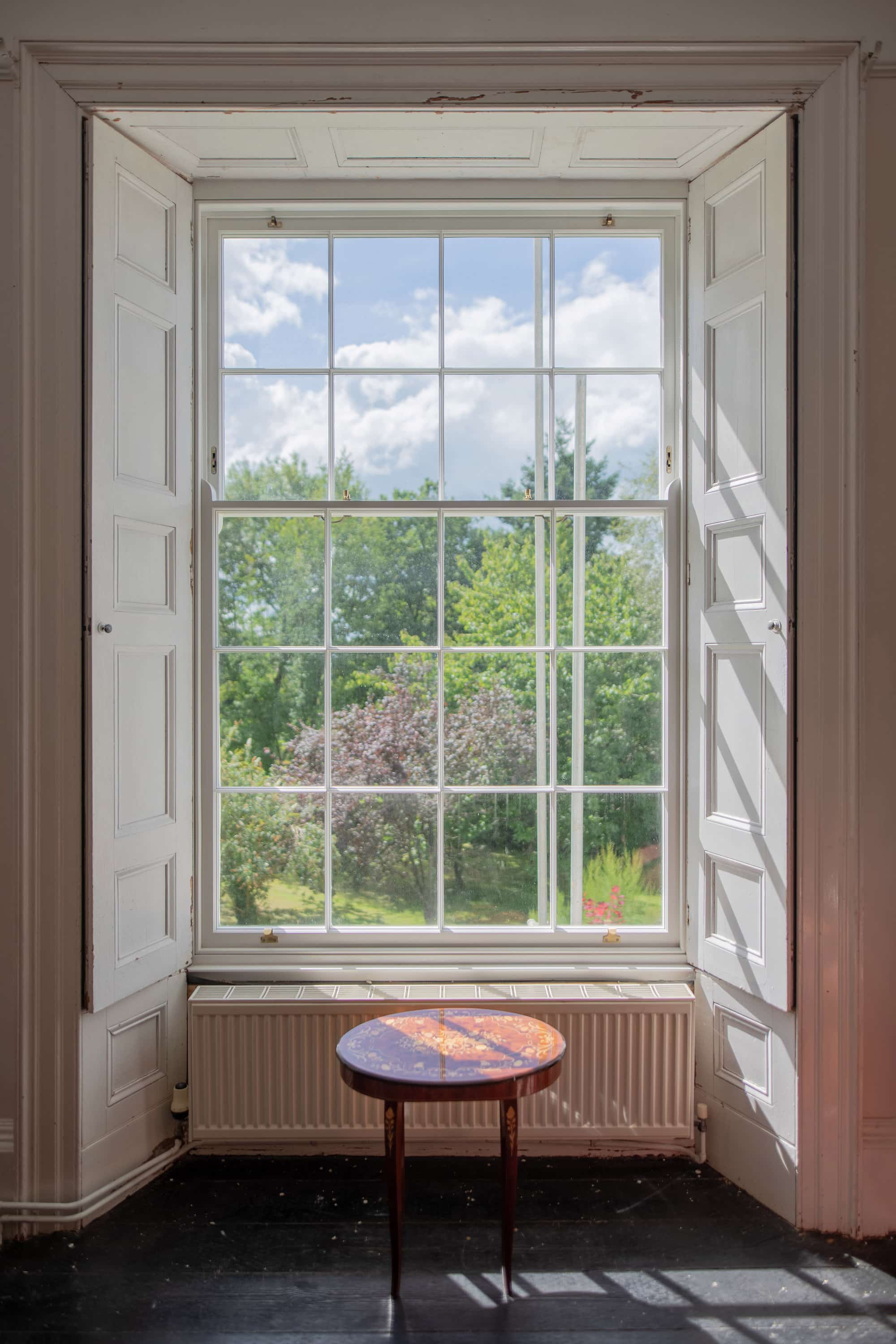
Double glazing
Wooden double glazed windows involve two layers of glass separated by a gap of air and inert gas, usually argon or nitrogen. Acting as an insulator, the gap prevents warm air from escaping and cold air from entering your home. Along with its insulating and energy-efficient properties, double glazing also helps to reduce outside noise for a more comfortable interior.
The high-performance double glazing we install into our casement and sliding sash windows is our standard 24mm double-glazing, featuring soft coat toughened glass and a 16mm gap filled with 90% argon gas.
Triple glazing
As a more robust version of double-glazing, with the right glass, triple-glazing can achieve very low U-values, getting as low as 0.6 with the optimum unit thickness and glass type, significantly reduce outside noise, and deliver increased energy efficiency.
However, triple-glazing costs more, can take longer to manufacture and deliver, and the additional glass makes the overall unit heavier, impacting your choice of hinges and window furniture. Triple-glazing will also make your casements and frames thicker, which might cause planning issues for some properties.
Duplex bars
Many of our timber frame windows incorporate duplex bars. These are additional bars that can be added in different styles within the main window frame to give the effect of having multiple smaller panes. Often used for specific designs in period or listed properties, duplex bars give an authentic finish which can help with any planning issues.
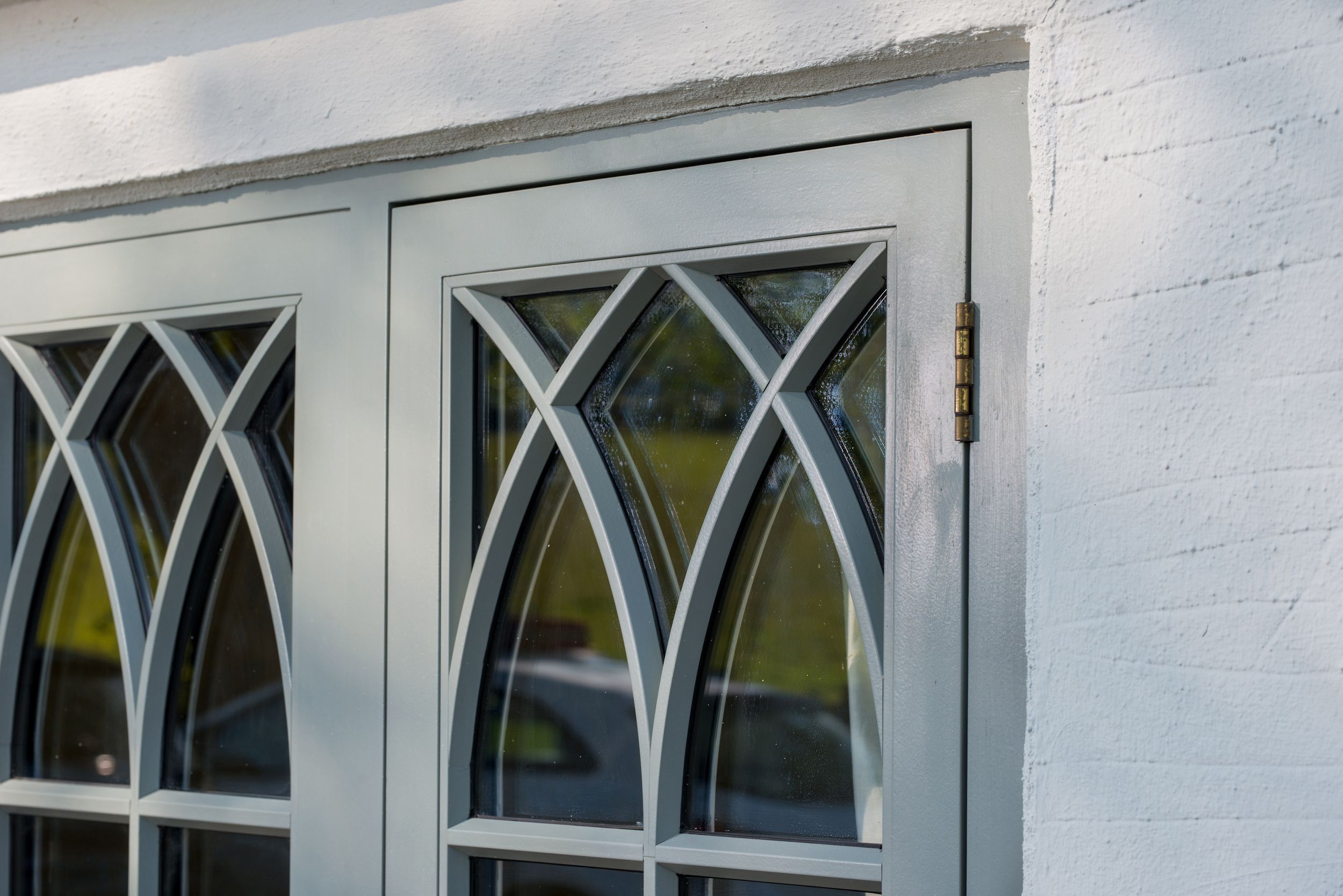
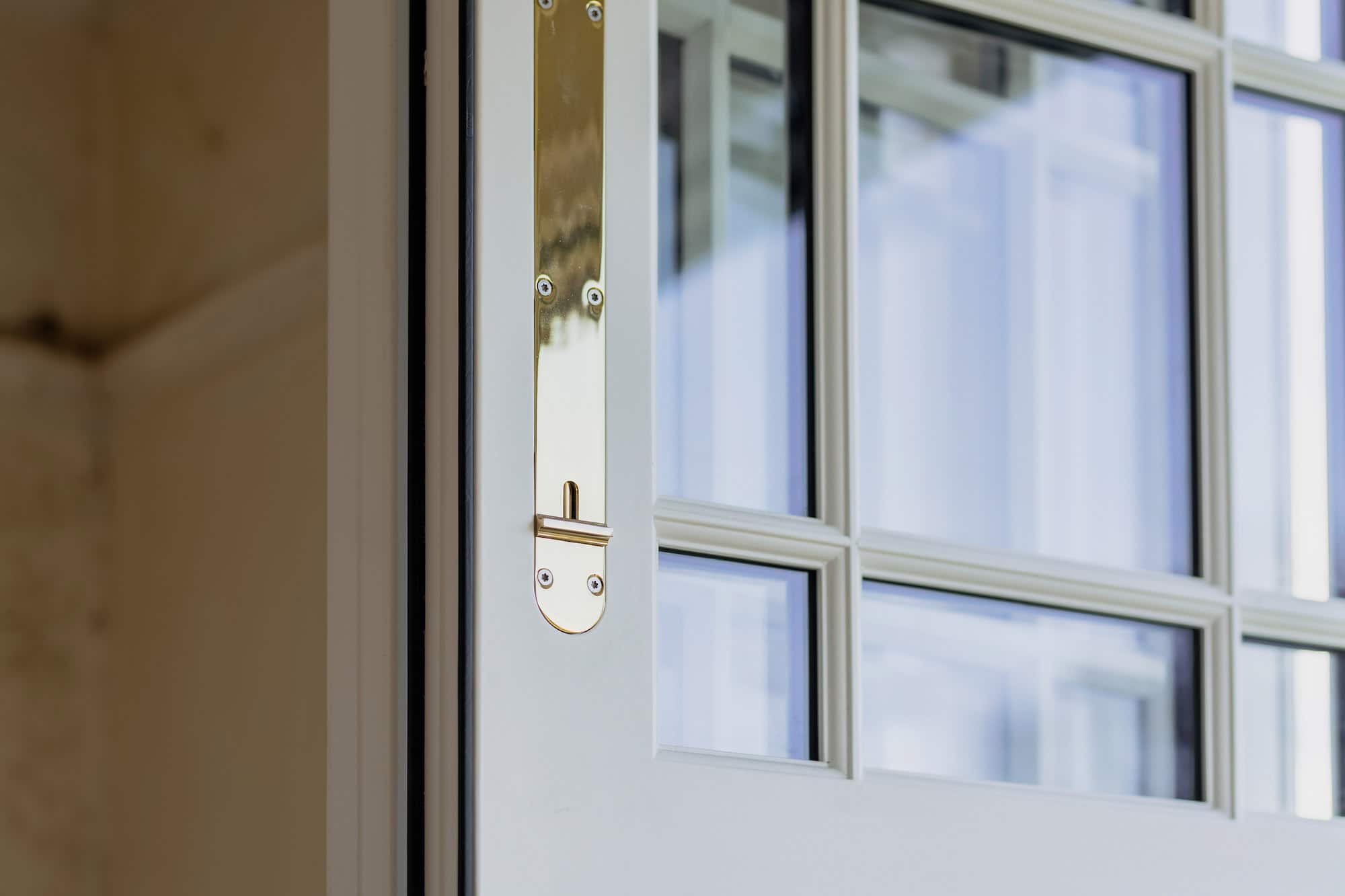
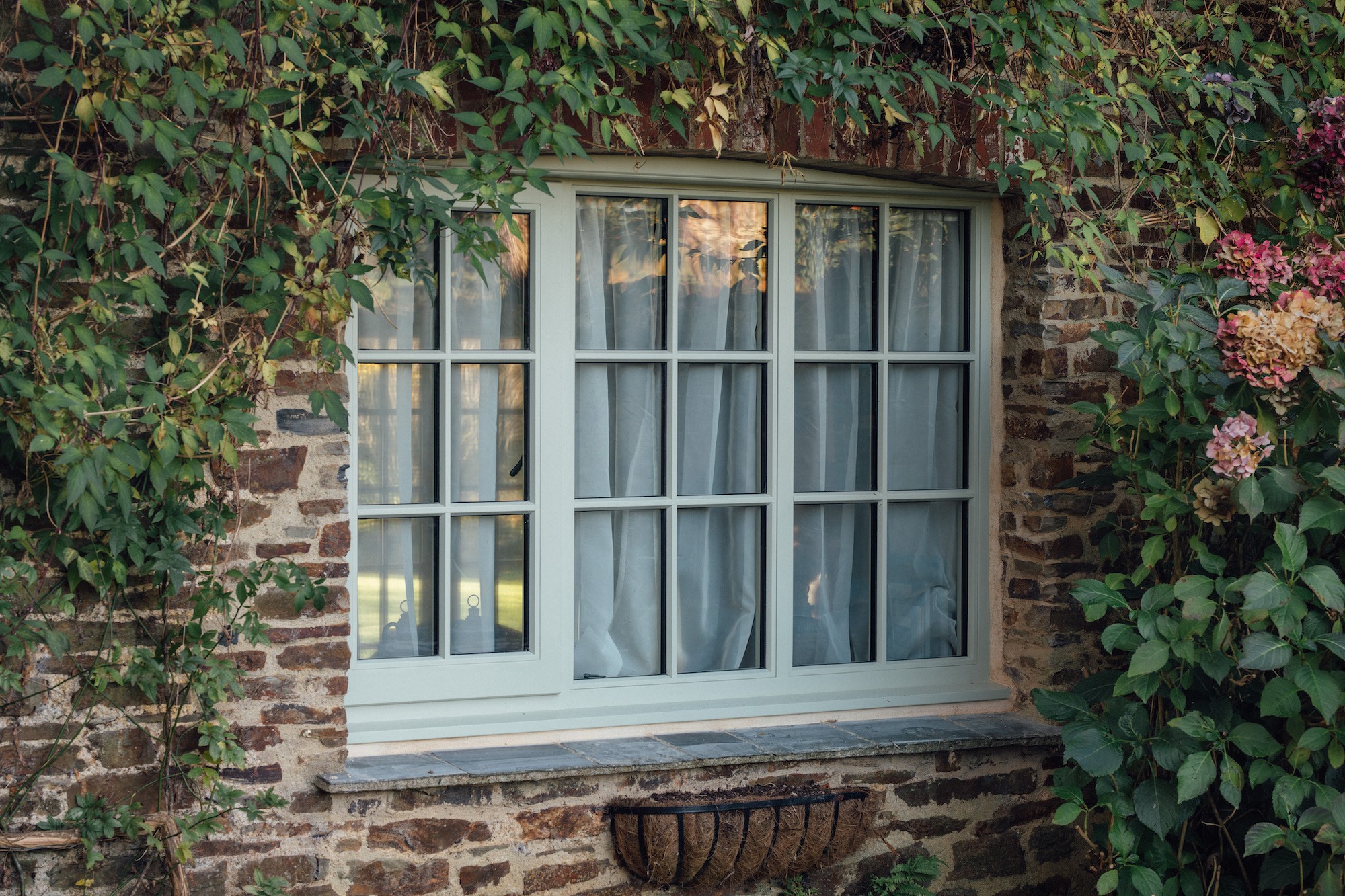
Self-cleaning glass
Self-cleaning glass presents an image of effortless maintenance, where the specially developed glass coating technology repels dirt and grime to prevent it from building up. At the same time, the rain washes away any residue.
But despite its obvious qualities, it’s perhaps not the ideal glazing option for most windows in the home. The glass is easily marked if touched by hand, and it’s also important to remember that windows under the eaves of your property may not be in contact with rainfall to clean the glass at all. It’s commonly used in pitched roof lights or windows in hard-to-reach areas.
Laminated glass
Laminated glass is widely used in applications where safety and security are a priority. Incredibly tough, laminated glass is shock and impact-resistant thanks to its internal layer of EVA (ethylene-vinyl acetate) or PVB (polyvinyl butyral) film. But should it ever break, the film layer between the two glass panes prevents the window from shattering and stays intact to minimise risk.
On top of that, the layer of laminated glass can also help reduce outside noise and harmful UV rays by up to 98% to prevent carpet, soft furnishings, and furniture from fading in direct sunlight.
Sandblasted glass
Enhance your windows with bespoke sandblasted glass, adding a touch of sophistication and privacy to your space. As the name suggests, glass is carefully blasted with sand, a natural abrasive, and pressurised air to permanently etch the glass with anything from house names or numbers to bespoke designs and patterns.
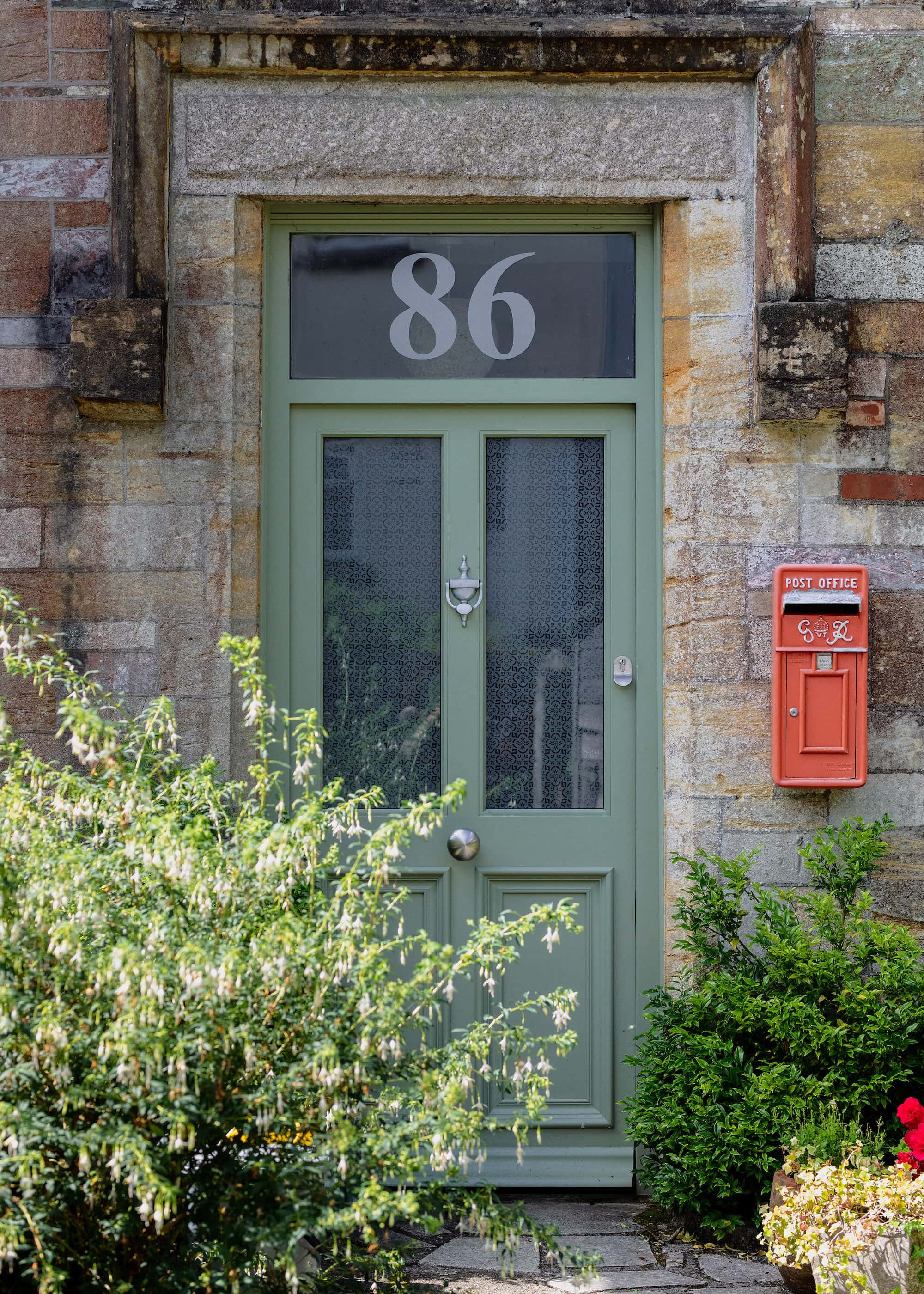
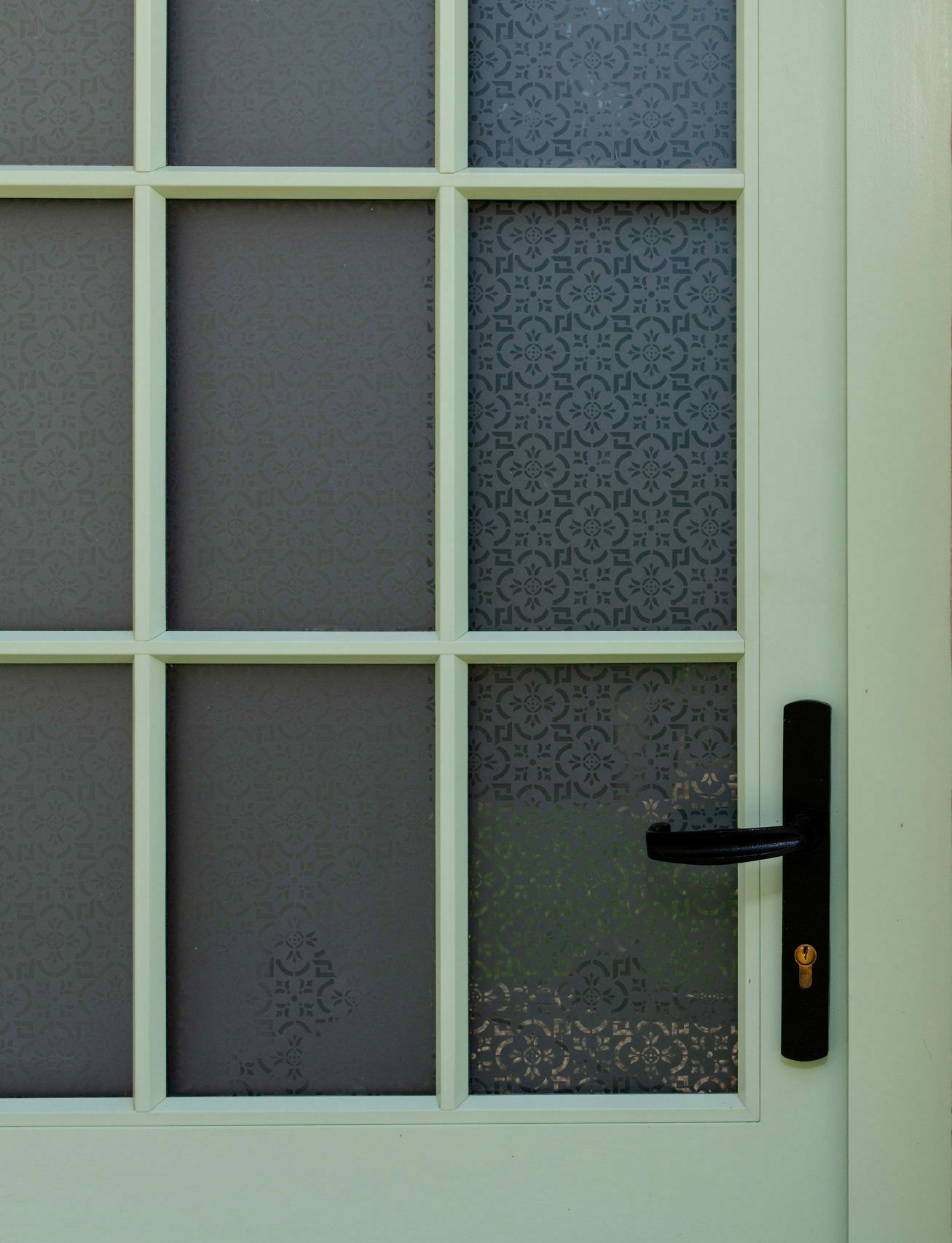
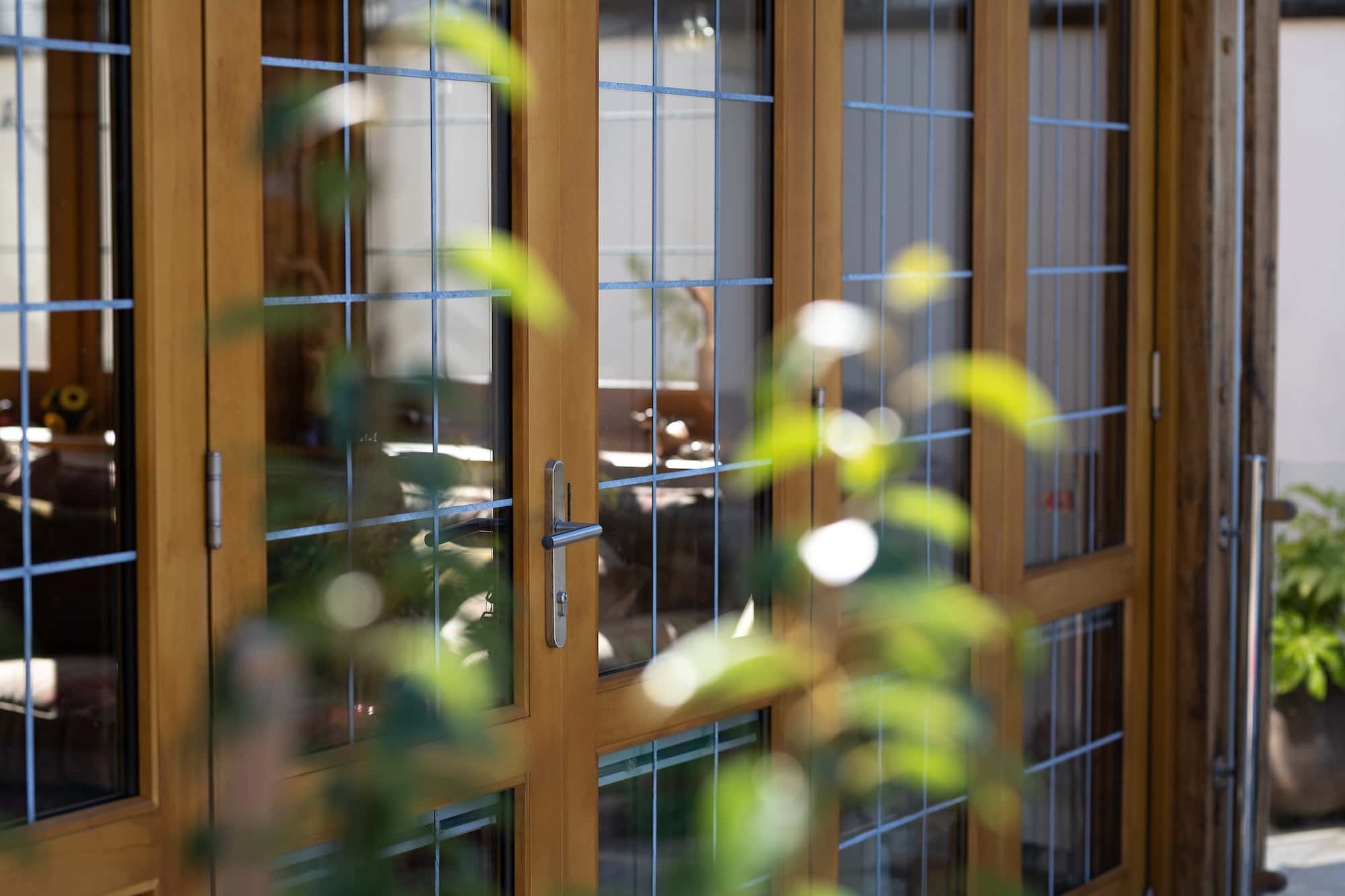
Leaded glass
Leaded glass designs and patterns are timeless, adding character to your home. Lead can be added to standard units or single panes as a completely customised option to create squares, circles, or diamonds for the perfect finish.
Coloured glass
Alongside the choice of adding a stained glass design to your windows for a completely bespoke finish, we can also use specialist transparent coloured window film. Coming in a range of colours, the film can be applied to your glass before being incorporated into your double or triple-glazed units. A perfect opportunity to create something truly bespoke or recreate an original window design.
Processed glass
Processed glass is treated in different ways to create various finishes for your windows, including mirrored or toughened glass. Depending on the treatment used, processed glass is commonly seen on other glass products, from shelves and table tops to shower screens and painted splashbacks. But depending on your requirements, process glass can be an option for your windows.
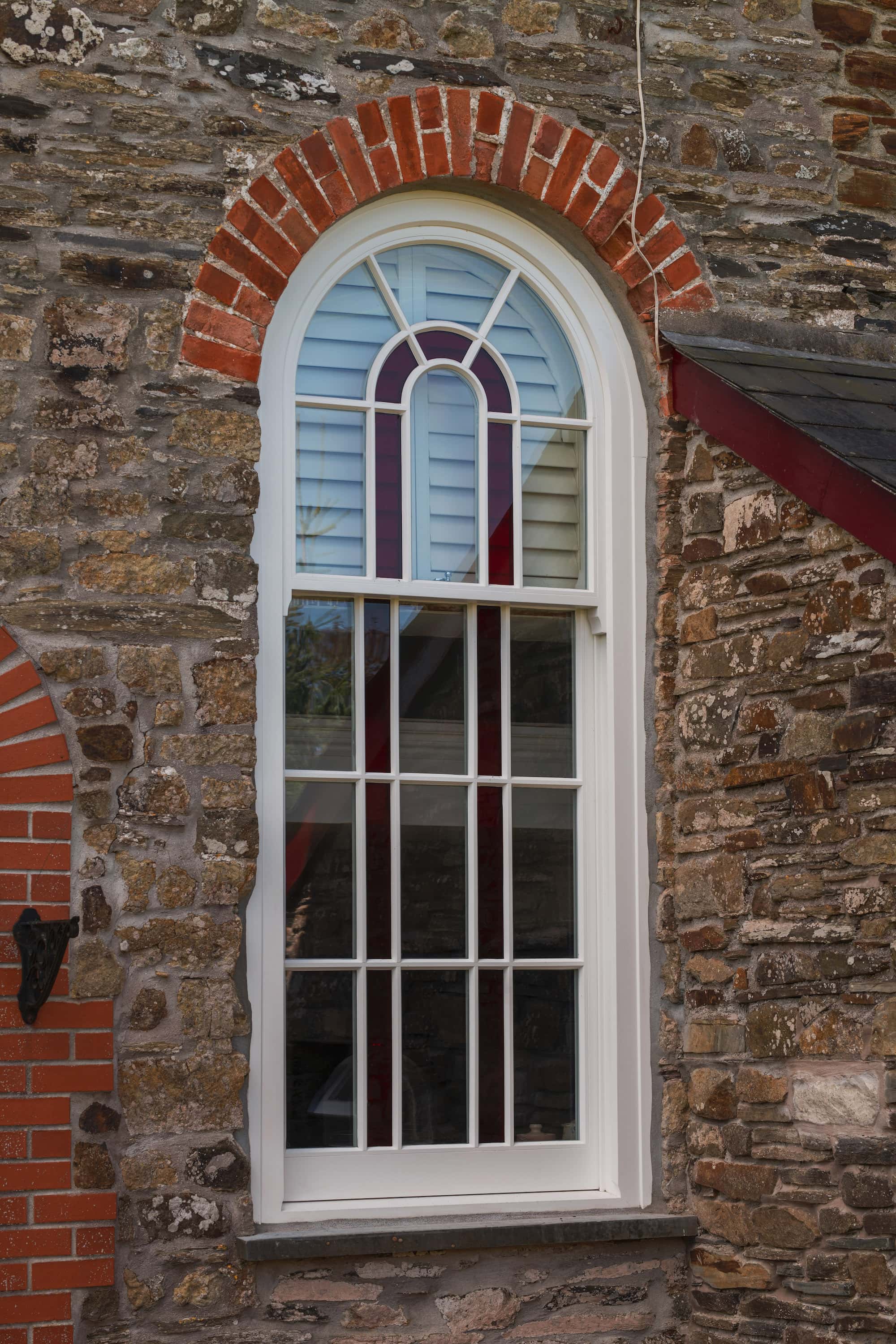
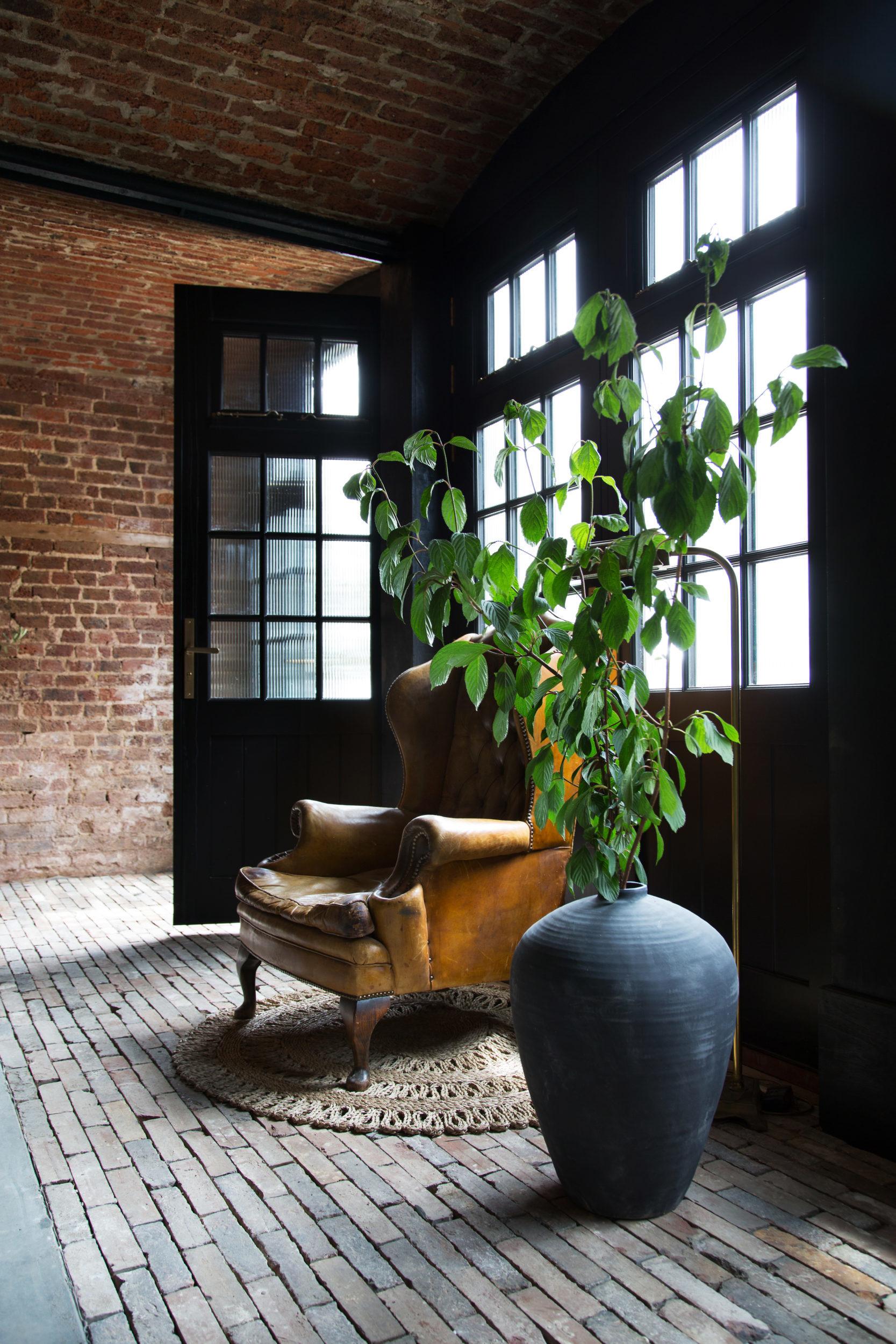
Talk to Nathan McCarter Joinery
With plenty of different glass types available, this list will give you an overview of the most common ones, with just enough detail to determine what to use in your home’s windows, especially if you’re considering using Low-E or thermally efficient glass. But, of course, you may want to talk to us for advice on what glass type is best for you, your windows, and your home.
All glass types need careful consideration when investing in handcrafted timber doors or windows. And having a conversation with us means we can understand your needs and desires to guide you to a decision that’s right for you. We can also give you expert advice on any planning issues or constraints you may have on your property.
So, let’s start your window project today. For more information, to arrange a site survey, or to discuss glass types, call us on 01822 615 010, email us at info@nathanmccarter.co.uk, or send us a message today.


